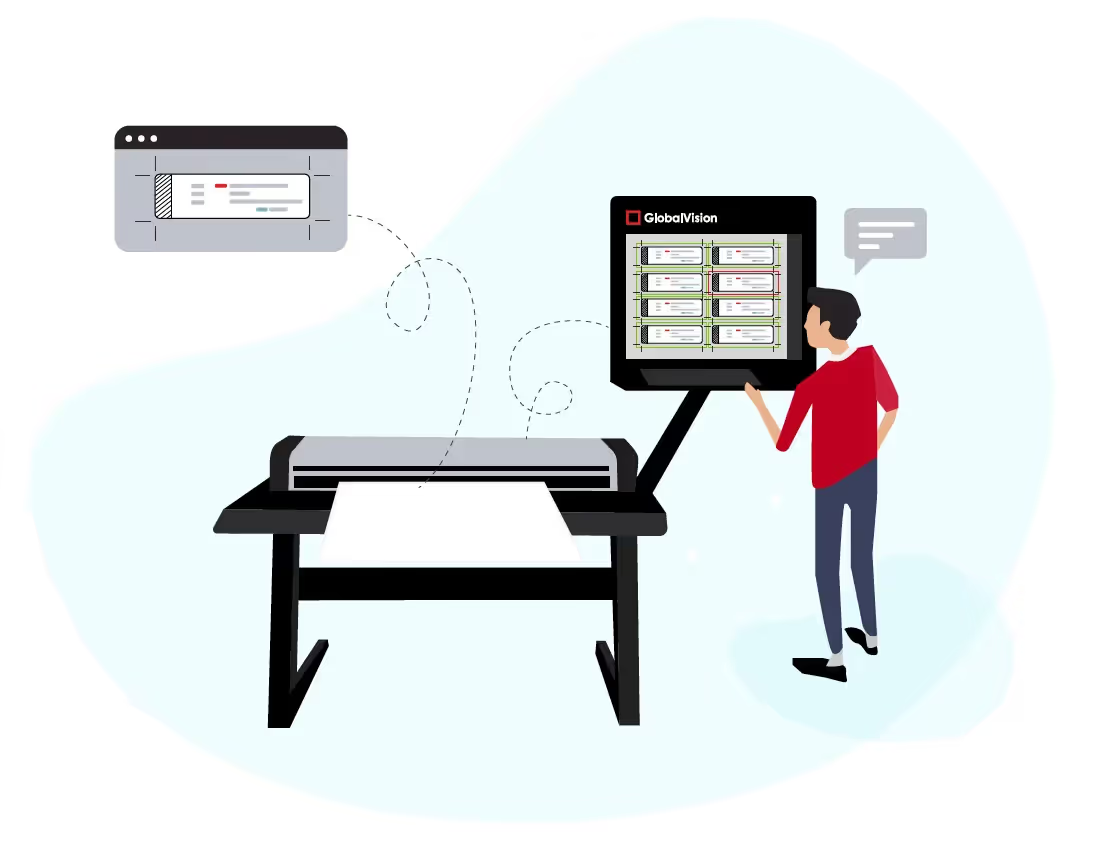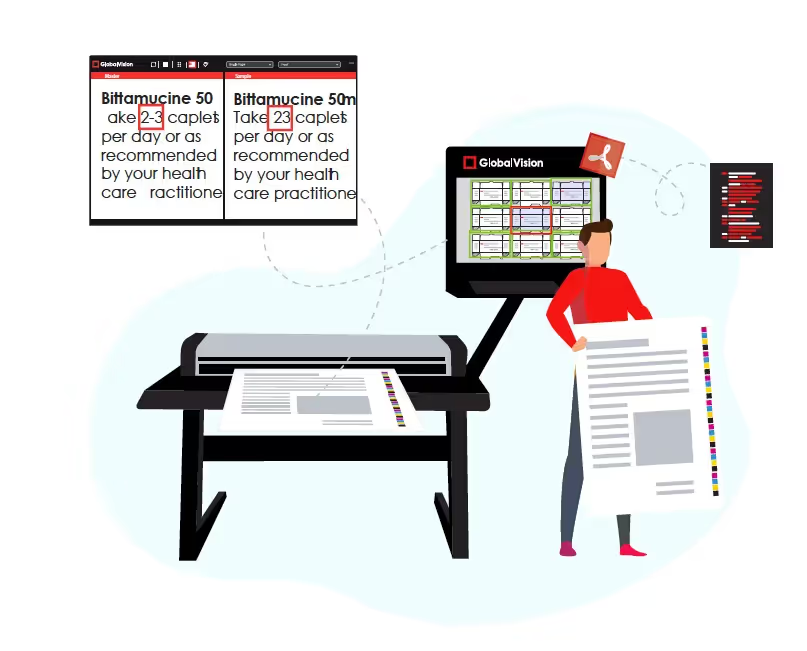Off-line vs. In-line Inspection


Off-Line vs. In-Line Inspection:
Identifying the Right System To Avoid Costly Printing Errors
Earlier this year, food manufacturer Kent Quality Foods, Inc. recalled over 300,000 pounds of meat, due to a labeling error in its products’ ingredients.1 Specifically, the company’s ready-to-eat hot dogs and sausage in- cluded soy, which was not listed on the label, putting those with soy allergies at serious risk.
In another labeling error in 2018, Pfizer issued a voluntary recall of a flavor of liquid Children’s Advil, due to a potentially dangerous dosing error on its packaging.2 Specifically, the dosage cup included in the packaging was listed with measurements in teaspoons, but the label on the bottle was marked in milliliters.
As a result, the safety of the vulnerable pediatric population for that medication was put in jeopardy. These are just two examples of what can go wrong if a company does not have rigorous quality control of print, labeling, and packaging processes.
The traditional, real-time approach of in-line print inspection systems is one way to prevent these and other dangerous, costly errors. The technology, used to analyze every component in a print run and detect defects, registration issues, and mechanical and operator errors, re- quires a sample from early in the run to be used as the Master and as a baseline for the rest of the job. This can be risky, though, as the Master file is the only one that has been approved by the customer. Therefore, if there is an error in the transferred file, then all components com- pared against it will be wrong too, and the responsibility—and associated costs—of fixing any spoilage falls on the shoulders of the printer.
To prevent this, another option is available in off-line inspection software. With off-line inspec- tion, printing components are removed from the line throughout the run and scanned into the system, where the software can compare them against the original Master file. It will check for typos, artwork consistencies, and, if used from the beginning, any pre-press human errors. As opposed to in-line inspection, which requires one camera or device for each printing press, one off-line inspection software license can be used to analyze components from multiple presses.
For those companies with smaller budgets, off-line inspection software can be used as a re- liable and affordable single inspection system. However, even companies confident in their current in-line inspection system should consider off-line, as automated systems do not let you proactively prevent errors or notify you of them during the printing process. To realize how off- line inspection software can help you avoid costly recalls, you must understand how it can help safeguard your printing and labeling process by complementing the value of in-line inspection.

Off-Line Inspection:
Adding Reliability and Efficiency to Print Inspection
The job of an in-line system is to essentially compare each copy to the client’s Master file, making sure each one is the same as the original. Yet, if there is an error in the copy of the Master file and the operator does not catch it, then every subsequent one will have it, too. When running full speed on a press, the operator is limited by how much they can look at each copy, leaving open the possibility that thousands could be made before an error is found.
With an off-line system, a comparison is done using the customer’s approved PDF. The operator can pull copies throughout the print run and compare them against the PDF to make sure everything is as it was intended to be. When comparing to a PDF, there are always going to be subtle differences between the two, as there are inherent anomalies when comparing two prints. For example, there may be more bleed on one than the other or the ink may slightly spread. This sensitivity is why a PDF cannot be used with an in-line system, as it will flag these differences every time, eventually slowing down production. Turning the sensitivity in the sys- tem down to avoid this, though, would defeat the purpose of running an inspection, as you may turn it down too low and miss actual defects.
Using an off-line system to supplement an in-line one gives you the best of both worlds, allowing you to catch any potential printing errors be- fore, during, and after print runs. For instance, the pre-press department makes a printing press using the approved file, but what if the press is developed with a mistake? All copies made from that press will then have the mistake, and the in-line system does not have the ca- pacity to recognize that and flag it. An off-line inspection system offers the capability of proof- ing digital files before the press is made, preventing early and costly mistakes. This includes us- ing an internal digital bar code module to verify whether the bar codes are correct and legible. In addition, the press operator setting up the process can print test copies, check them with the off-line software, and, if necessary, make minor adjustments before the print run. This is as opposed to in-line, where hundreds of prints are being produced by the second and the only inspection done is integrated in the printer itself.

Other Considerations About the Value of an Off-Line Inspection System
The combination of in-line and off-line inspection systems gives printers more ability to control quality, leading to reduced production costs and waste and improved customer satisfaction.
Yet, there are other areas within the realm of print inspection where off-line can serve as a valuable aid in preserving quality and accuracy, but in-line cannot.
For example, in-line inspections are used for runs where there is a small print area in need of quality oversight. However, other types of print jobs, such as sheet-fed or large-format print, which require a sizable camera, pose unique challenges that an off-line inspection system can address. A print operator can remove these labels as they are printed and bring those to the off-line scanner during the run. This also applies to narrow printing, where copies are moved and formed into a roll, preventing the copies from moving under a camera. In these situations, off-line adds a level of accuracy and confidence by giving the printer a detailed inspection they can rely on to detect potentially costly printing errors.
While in-line inspection systems are often viewed as a way to improve compliance with Food and Drug Administration (FDA) standards, off-line inspection systems can also serve as a valuable tool in the face of stringent regulations. This is due to the installation qualification (IQ), operation qualification (OQ), and performance qualification (PQ) validation requirements that go into certifying the software’s performance. They can be offered as a service solution and evidence that the system is functioning as intended.
In the end, printing errors are unfortunately inevitable. By integrating both on-line and off-line inspection systems, you improve the potential for cost savings by reducing the time and mate- rials lost to avoidable errors, ultimately protecting not just your own bottom line but also your customer’s brand, not to mention their long-lasting satisfaction.



